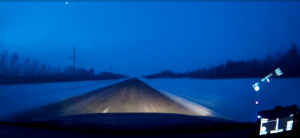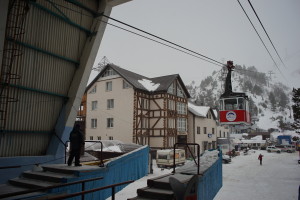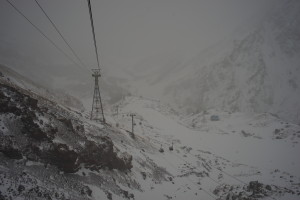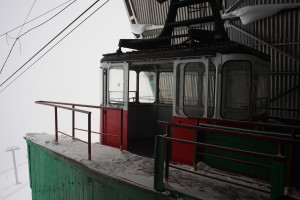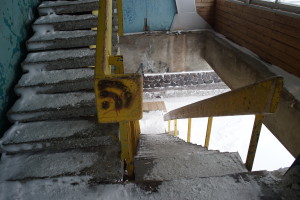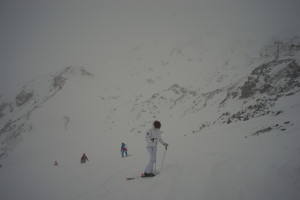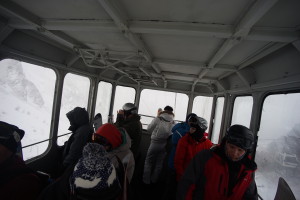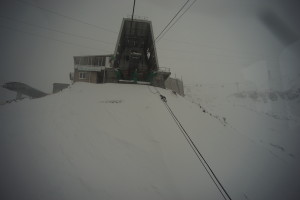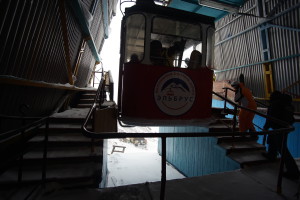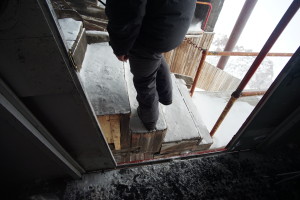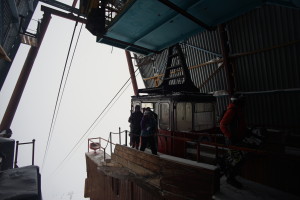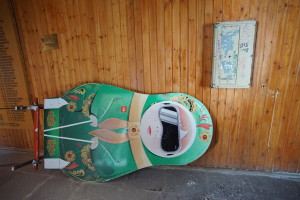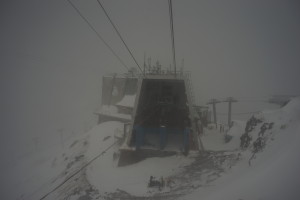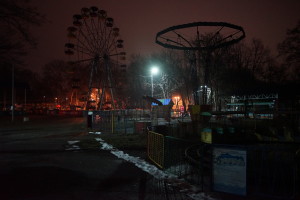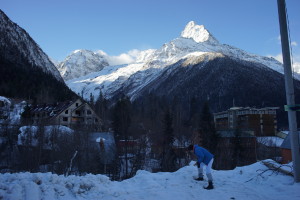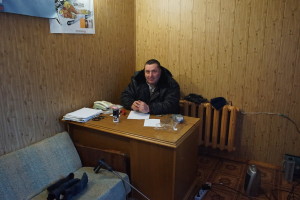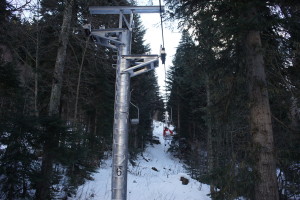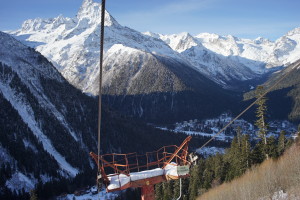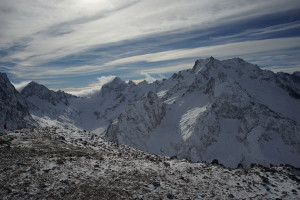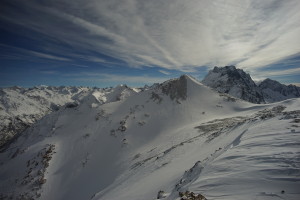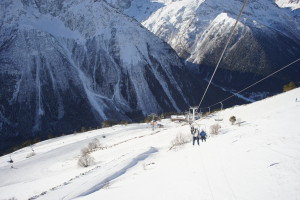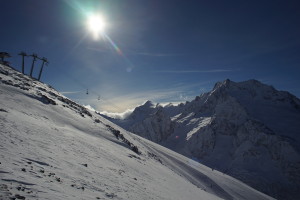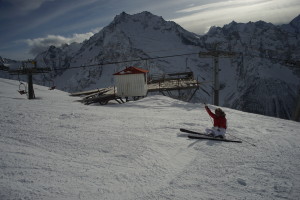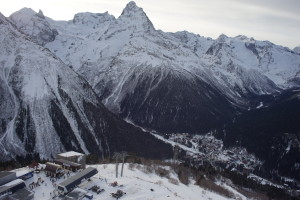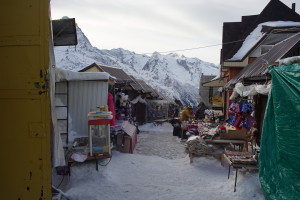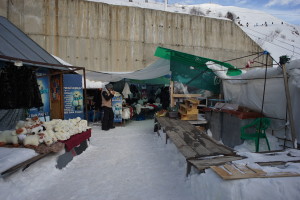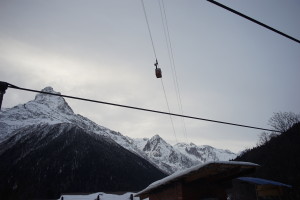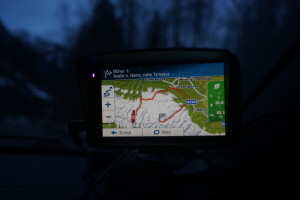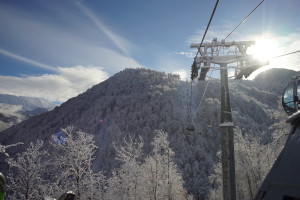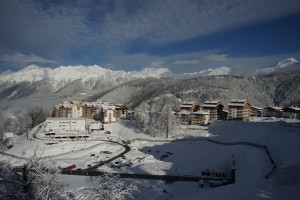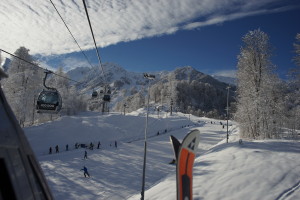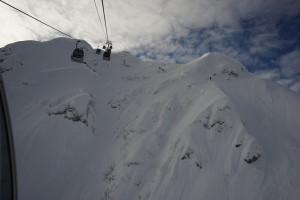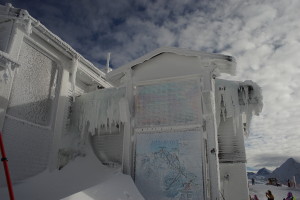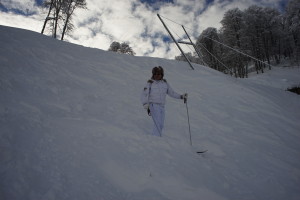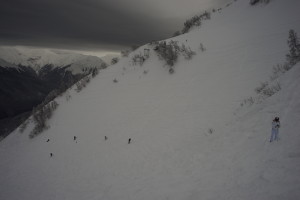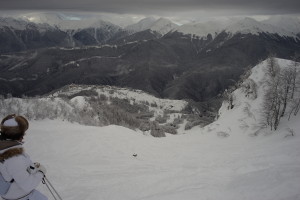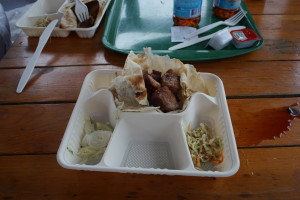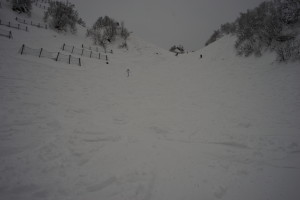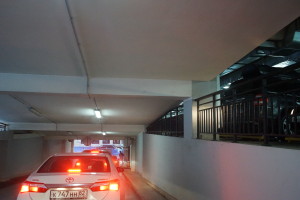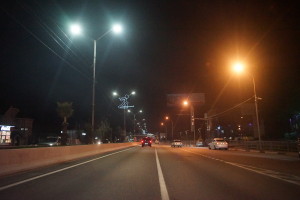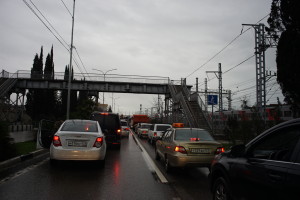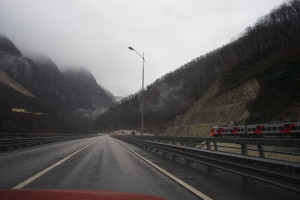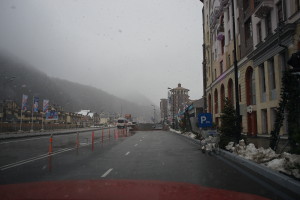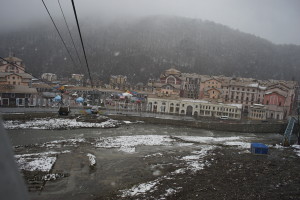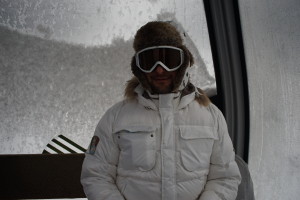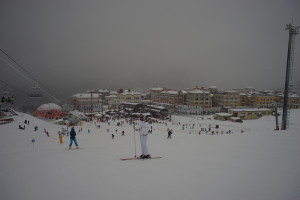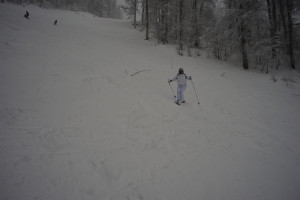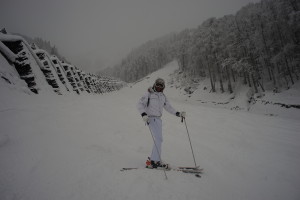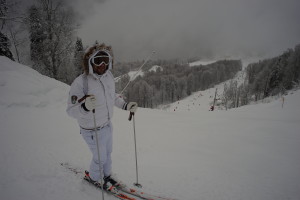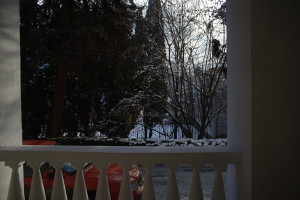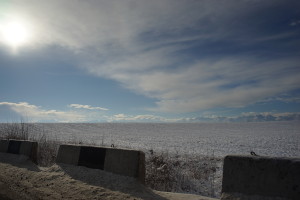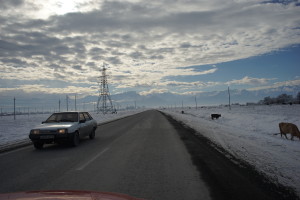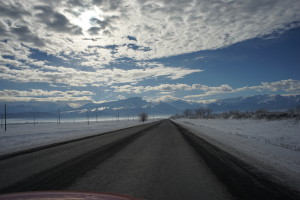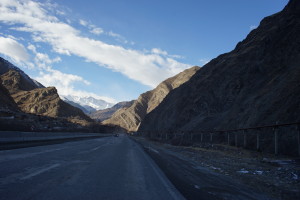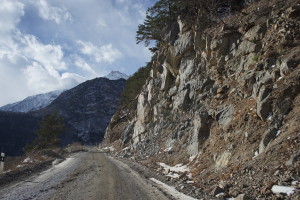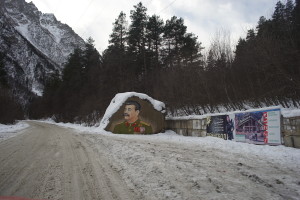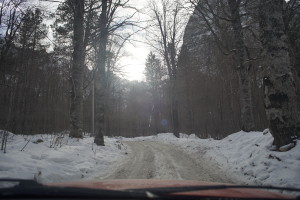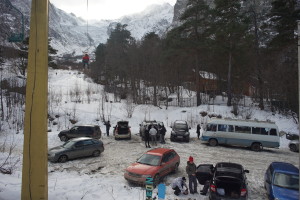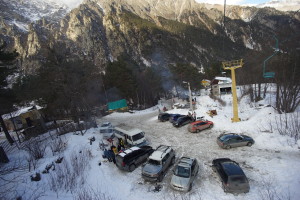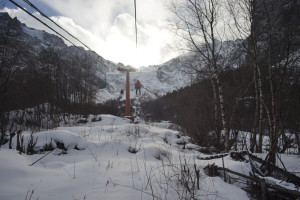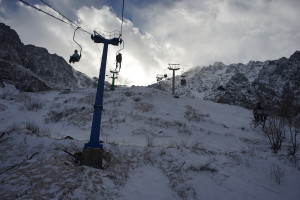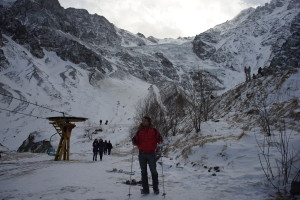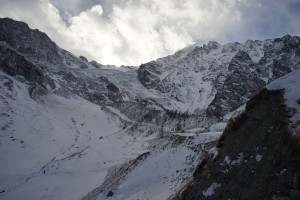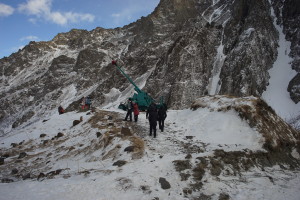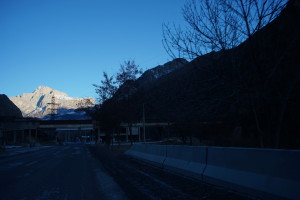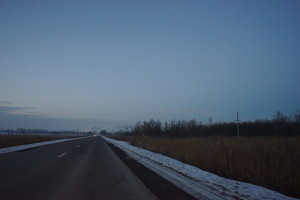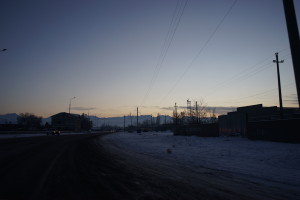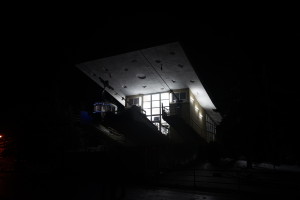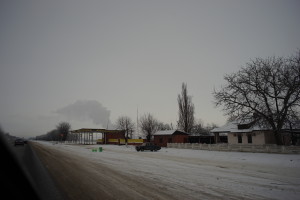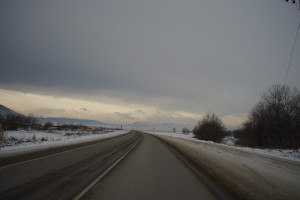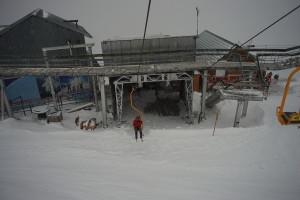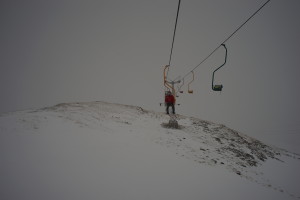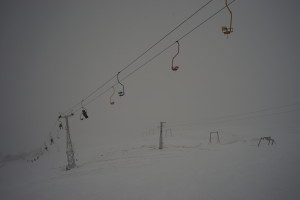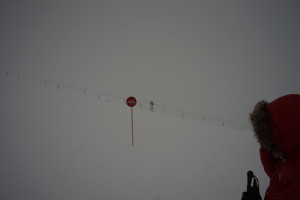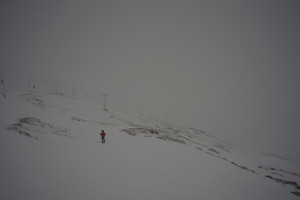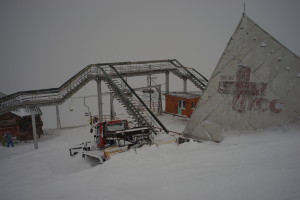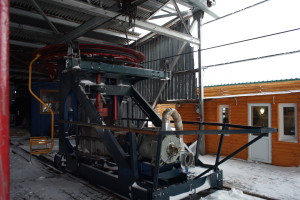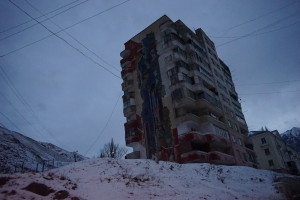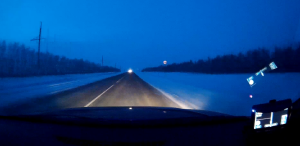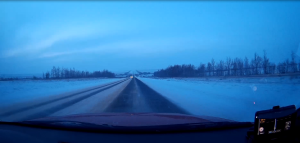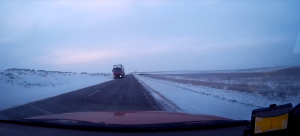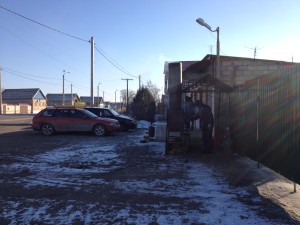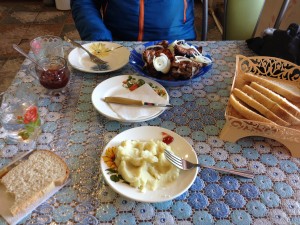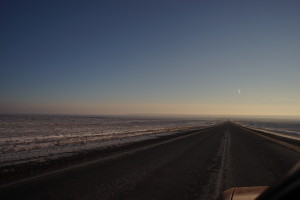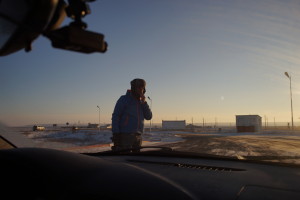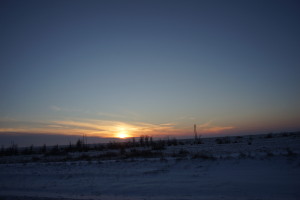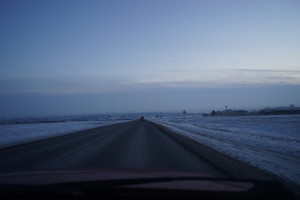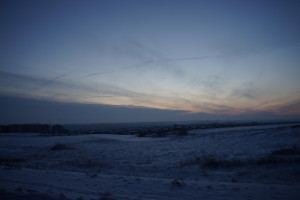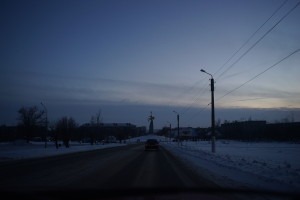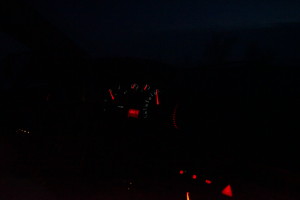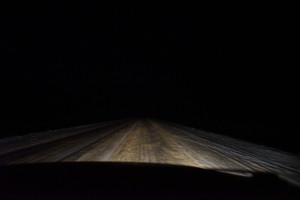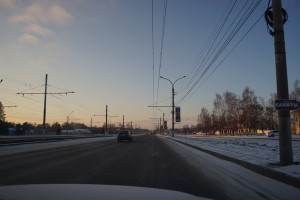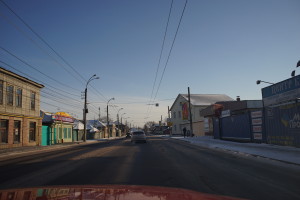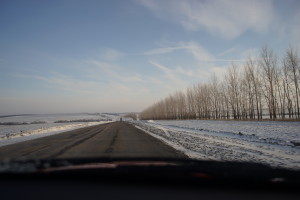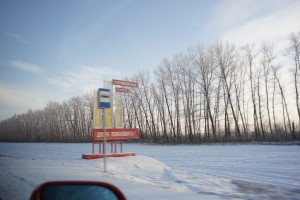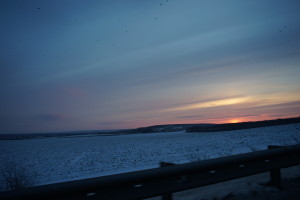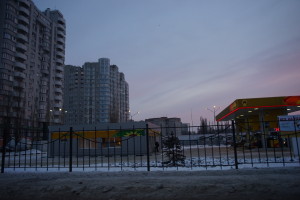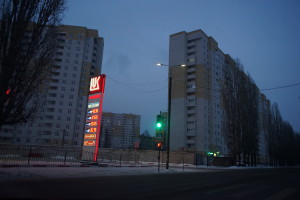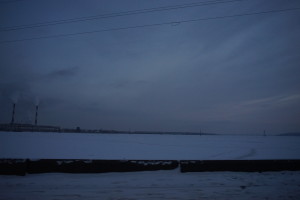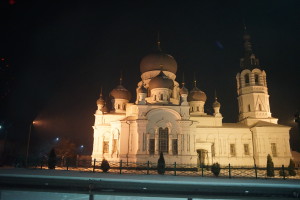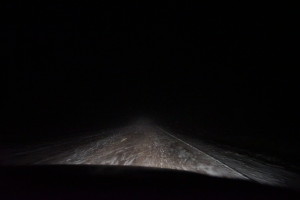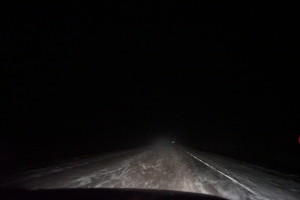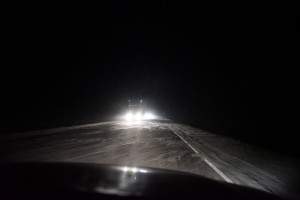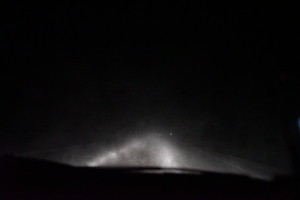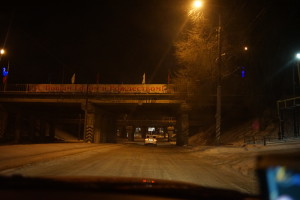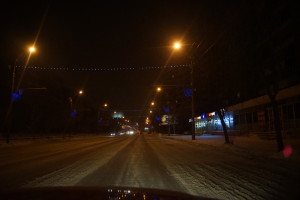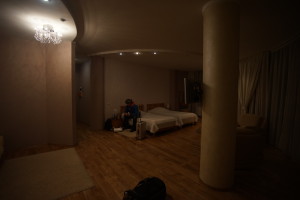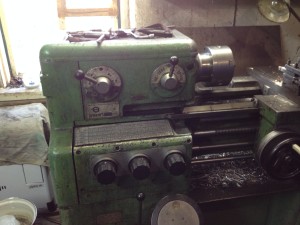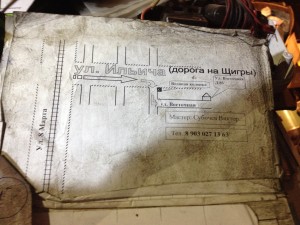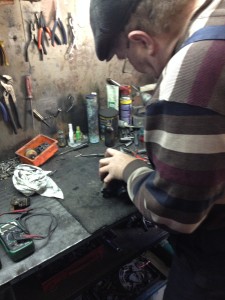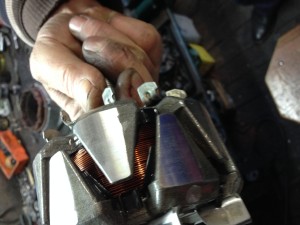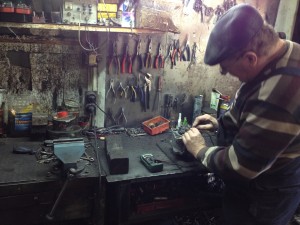The icy Russian night cloaks the world and keeps it silent. I am standing in the dark, leaning against the large panorama window panes of the suite, glancing at the frozen Wolga. I am reflecting our plans, checking the next legs of the trip on Google Maps: to the border of Kazachstan, then Oral, Aktobe, Aral, Shymkent – probably one of the most fascinating, and certainly the loneliest and most remote part of the trip. 520km to Oral, another 475km to Aktobe and from there another 620km to Aral. Southwards of Aral settlement will become more frequent, but between Oral and Aral there are parts in which the road passes through the desert without passing any facilities for over 200km. Interestingly enough google maps shows a couple of traffic jams on the roads. Usually this indicates one way operation due to construction sites. Many nights I have spent with preparations, going through options, making estimates, evalauting challenges and chances, trying to minimise risks. Nights and hours of research and consideration. All these theoretical thoughts now add up for the first time with practical experiences with the Russian winter.
First of all, the car. The operational envelope goes down to minus thirty degrees according to Audi, but this is not a quantum leap, not a digital transition from one to zero. Fatigue. Fatigue increases when components are brought close their operational limits, and what may work for 50.000km or more in Central Europe, may malfunction way quicker in the Russian winter – a phenomenon not unheard of. This alone would not concern me, I was expecting that and this was why some of the most exposed parts had been replaced prior to the drive. And I was prepared to go and seek a garage occasionally for minor repairs. What concerns me slightly more is that I would have expected a more dense network of Audi/Volkswagen Services in Russia based upon the fact that these are among the more popular cars of Western manufacturers in Russia and that I would have expected spare parts to be available more easily than we experienced in Kursk (though it is hard to tell to which extent this was a result of the Russian holidays, which I expect it is). This is, however, not very promising for Kazachstan, in which I should expect an even lower availability of spare parts. Taking into account that being stuck in a remote place would cause several follow-up problems (most of all with the time frames of our visa plus customs issues), I find this thought concerning.
Secondly, we are now going to enter the most exposed part of the road. Northern Kazachstan is already under the influence of the central Russian climate, likely to experience cold surges from Siberian air in winter. It is unusually cold these days, much colder than I expected based upon the available general weather and climate data. Driving the car on its operational limits in a very remote and to us unknown environment does not comfort me.
While I am glancing out at the frozen Wolga, I feel a certain uneasyness. Going into the mountains teaches you certain experiences. Play to your instincts, first of all. But also make rational considerations in an irrational environment, an environment which provides far less information than would be necessary for clear decision-making. This involves risk-evaluation in complex risk environments of different, independent overlapping risks, which by themselves may not trigger a no-go decision, but in combination very well can. Moreover, preventing oneself from seeking for the signs and considerations, which would allow you to go and to not abandon your plans, but instead positively seeking for those which indicate a no-go and hence to be open for the decision not to go, regardless of what you already have invested to this point. Way more difficult than climbing a 4000m plus summit, is getting down safely again. Many mountaineers have died not on the climb, but on the descent – because they had missed the point of no-return. This, by the way, includes the ability not to question your previous decisions subsequently, only because it turned out that against the odds it would have been possible to go. You need to remind yourself that you were deciding under the lack of crucial information, and that therefore your decision remains a right decision, even if the random elements coincidently turn out to have been more positive than you expected, because precisely this was not foreseeable. In other words: what ex-post might have been possible, remains impossible ex-ante, and therefore the ex-ante decision not to go was the right decision.
If you do not follow this maxime, you almost certainly will experience the risk-shift effect, which is known from avalanche risk evaluation. Human nature tends to shift to more and more risky behaviour, whenever a decision involving an unkown risk turns out to be still (apparently) safe. Consequently, skiers are known for tending to decide for more and more risky slopes, because all previous slopes had turned out safe, until they finally cross the invisible limit and trigger the avalanche and possibly pay for this wrong decision with their lives. By sheer logic this triggers another consequence: whenever the limit is unknown, it is impossible to take decisions which remain within the framework of safety, without keeping a safety margin. Any safety margin will always lead to abandoning options, which possibly still would have been safe. As a result, deciding against an option which would have been still safe, therefore does not indicate a wrong decision, but simply must occur whenever taking safe decisions. Subsequent knowledge that a certain discarded option would have been (still) safe, therefore automatically must occur, and so hindsight cannot serve as an evluation tool for previous decisions (at least in most cases). Really, rather the opposite is the case: if you ever witness a slope that you seriously considered, but against which you decided, being triggered and going-off, you have come dangerously close to that invisible limit. Really, you should not have ever considered this slope in the first place, if your decisions were good. The art of climbing mountains is not as many think based upon continuing until reaching the summit, but on the ability to turn back before crossing the point of no return, and regardless of previous investments into your undertaking.
All this speaks against this road into the ice desert. Let it be remote, fine. Let the car be more challenged by the Russian winter, fine. But temperatures at the lower limit of what we expected and the car probably being more likely to suffer from fatigue already before the operational limit of -30°C, is a combination I do not like. Approaching limits so far that your last fall-back scenario remains your only option, I do not like either.
And then there are these faint signs, just like in the mountains. In the mountains this can be subtle changes in the sound of the snow, or in the feeling when touching upon it with your skis. It can be the look of icy shapes, or something not even accessible by the rational part of your mind, but rather a feeling of unusuality. I have expierenced this a couple of times, and almost always it had been significant.
Traffic jams in the desert of Kazachstan? I had not seen any such indications on google maps before. This does not make the theory of constructions sites – although this would be a typical explanation in other circumstances – very likely. And I hinder myself from searching for explanations which would reason why this observation was harmless. Rather I try to seek for more sinister explanations, reasons not to go, if there are any. Now, if these traffic jams occur suddenly and in several locations, this only means the cars are slowing down at these spots. Now, this indicates that the road conditions have changed suddenly and somewhat unexpectedly. It therefore rather indicates that weather conditions must be harsh, and that the road has come close to impassable, and that road services are working on their limits to continue to keep it open. I am checking the weather reports; -22°C for Oral, -24°C for Aktobe. This I knew. Then I start to check for the smaller settlements: -26°C, -27°C. Really, that means that on the open road between the settlements temperatures must be about to drop below -30°C – jointly with heavy snowfalls and strong winds, Probably the cold and the snowfalls are about to block the road.
That is the final piece in the puzzle: I have taken my decision. we will not continue to the East. Thjis means that we will miss out one of the most exciting part of the road, and the we will never reach our original destination: Kyrgistan. Instead, we will head for our alternative goal – the majestetic mountains at the Southern Border of Russia: The Caucasus.
The alarm rings early this night at around 4.45 a.m. local time. We discuss the situation, and re-set the GPS: the first way point lies 375km to the south down that famous river; Wolgograd. The city that once was known as… Stalingrad.
